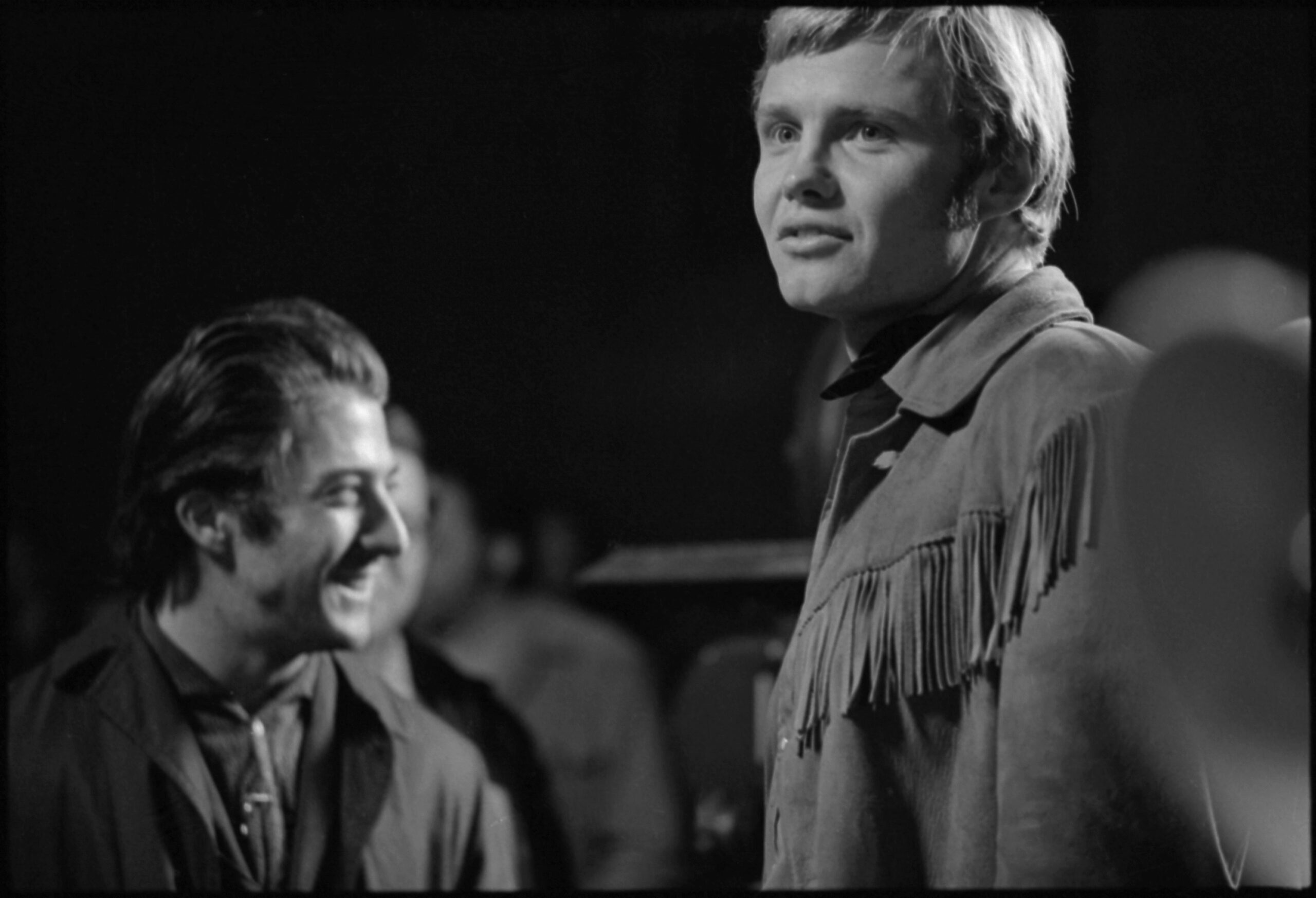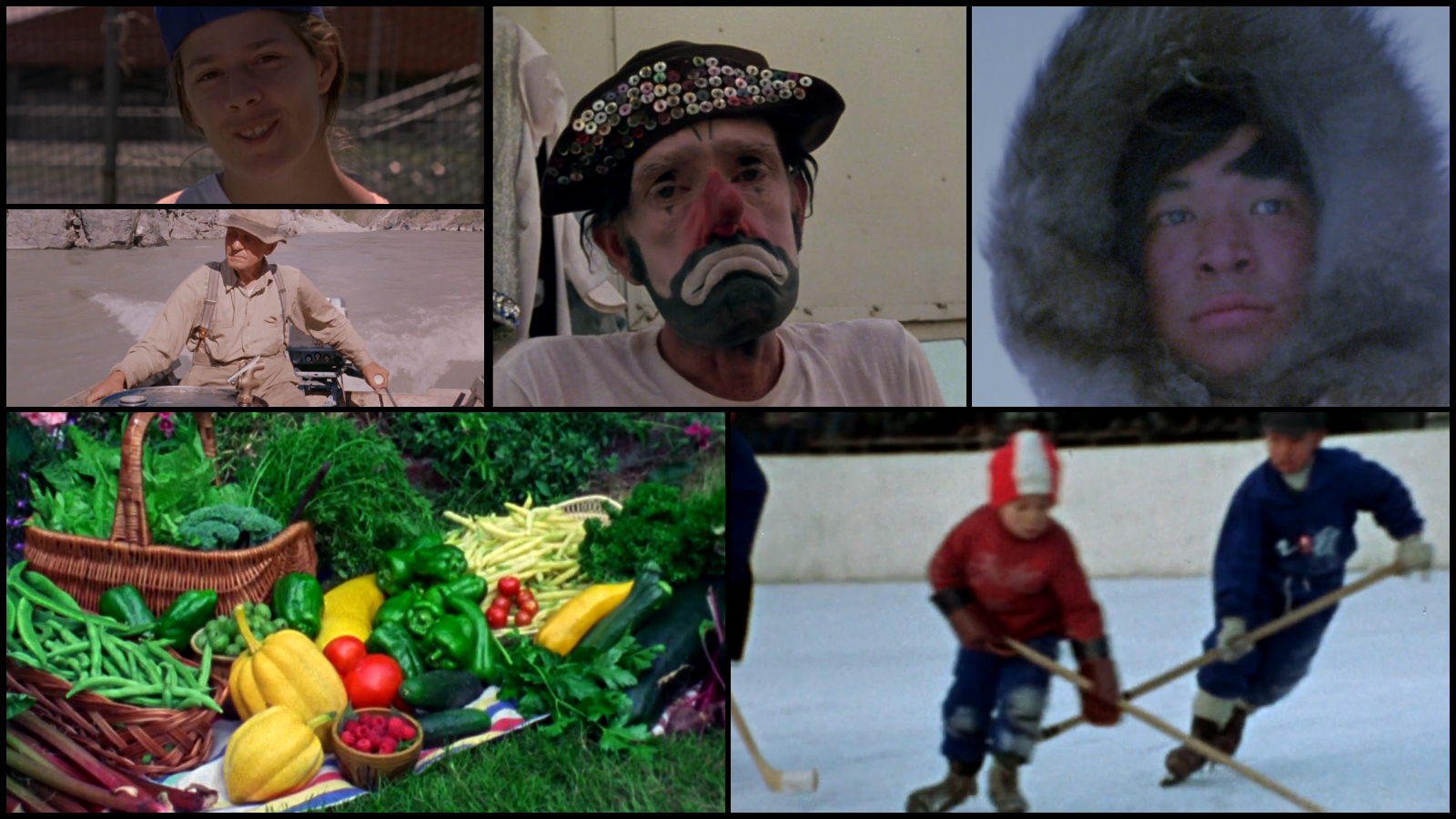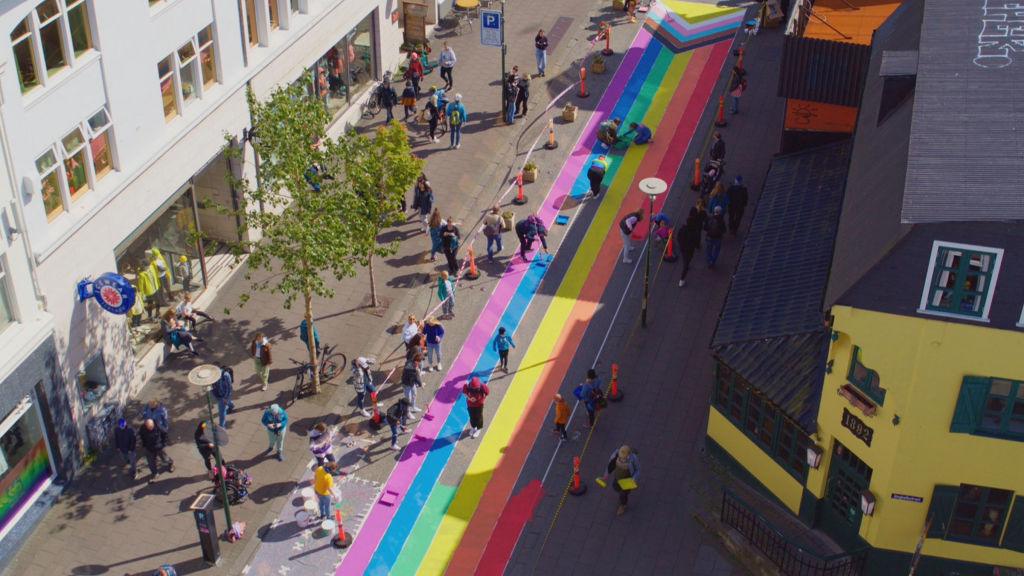Desperate Souls, Dark City and the Legend of Midnight Cowboy
(USA, 101 min.)
Dir. Nancy Buirski
Actor Bob Balaban makes a striking observation in Desperate Souls, Dark City and the Legend of Midnight Cowboy. Balaban notes that the landmark 1969 film marked the first time he’d seen an accurate depiction of New York City. In lieu of the glitzy and idealized bustling metropolis that served as a backdrop in films like Easter Parade, Balaban explains how John Schlesinger’s Best Picture Oscar winner saw Jon Voight’s hustler Joe Buck strolling through New York streets that were busy, dirty, chaotic, and dangerous. Desperate Souls features that unsettling clip of Joe Buck’s eye-opening strut. Fresh from the boonies, he walks confidently and pauses awestruck as New Yorkers scurry past a dead man. The body is splayed out on the sidewalk in a suit.
Balaban’s comment isn’t a slight on the Big Apple. Rather, it’s a compliment to Schlesinger’s direction. Desperate Souls positions Midnight Cowboy as a movie that captured a moment. The documentary by Nancy Buirski (A Crime on the Bayou) isn’t a typical ‘making of’ flick. She instead creates a cinematic essay about Midnight Cowboy and a turning point in American cinema. Desperate Souls situates Midnight Cowboy in the context of its production and illustrates how Joe Buck’s naïve swagger harnessed the zeitgeist. As a generation of Americans advocated for change, and revolutions swirled for civil rights, gender equality, and sexual liberation, the film tapped the cultural pulse by presenting things as they really were.
Something in the Air
The film draws inspiration from Glenn Frankel’s book Shooting Midnight Cowboy and Buirski lands many surviving players (save for Dustin Hoffman) to reflect on the impact of Midnight Cowboy over 50 years after its release. Jon Voight, for example, recalls memorable highlights from the production, like an exchange with a worried Schlesinger upon completion of the shoot. Voight explains how Schlesinger feared that the world wasn’t ready for a racy film with queer undertones. Voight, reacting intuitively to the film for which Schlesinger risked everything, remembers saying they’d live forever in a masterpiece’s shadow. His prediction proved correct.
While Buirski inevitably delivers plenty of tidbits regarding the production of Midnight Cowboy, the film largely avoids the anecdotal. Desperate Souls considers how and why this film in particular captured the moment and hunger for change. Jennifer Salt, daughter of Midnight Cowboy screenwriter Waldo Salt and a supporting actor in the film, looks back upon her dad’s blacklisting. She tells how Salt’s writing used movies to push America forward. However, facing censorship taught him much about saying something that mattered. That’s evident in Midnight Cowboy, which resonates with something in the air in 1960s’ America.
Other interviewees explain how the Vietnam War hangs all over Midnight Cowboy even though it’s not explicit in the film. They see in Voight’s Joe Buck and Dustin Hoffman’s Ratso Rizzo two outsiders worthy of empathy. Desperate Souls credits Midnight Cowboy’s eye for gritty realism for creating an empathetic portrait of friends living on the margins. Despite the scuzzy apartment and hustling with which the characters survive, the interviewees say that Midnight Cowboy spoke to a generation that was tired of the status quo. Audiences could relate to the characters’ appetite.
Queerness and Cowboys
Desperate Souls also devotes considerable time to Schlesinger’s background to understand his aptitude for the story. Interviewees note his roots in documentary and a prolific output for the BBC as ingredients for the film’s social realism. Moreover, the doc notes how, as a gay filmmaker, Schlesinger could reflect authentically the streets that Joe Buck walked. Interviewees like Schlesinger’s nephew, Ian Buruma, and cultural critic Lucy Sante explore elements of queer coding in the film.
Desperate Souls acknowledges that Joe and Ratso aren’t a couple, but that the film’s streetwise authenticity brought gay life into the mainstream in ways Hollywood hadn’t before. Interviewees, for example, situate Joe Buck’s iconic cowboy get-up within Hollywood’s legacy of masculine representation. They note the irony that Midnight Cowboy won Best Picture the same year that John Wayne won his Oscar for True Grit. Produced in an era of tension, though, one film easily holds up over the other. Cutaways to The Power of the Dog and Brokeback Mountain add to Midnight Cowboy’s legacy for deconstructing masculinity.
The queerness of Midnight Cowboy also leads to the inevitable chapter about the film’s controversial X-rating. Although the film is relatively tame by today’s standards—the X has since been revised to a soft R-rating—one can sense the taboo. Interviewees explain how attitudes towards homosexuality in particular guided the rating that could have been a kiss of death. They tell how psychologists still considered homosexuality an illness and advised Schlesinger to accept the X rating to avoid “tainting” young minds. But in accepting the rating, and situating the story within a racy and raw portrait of New York that drew upon the Andy Warhol scene and a generation’s newfound sexual freedom, Midnight Cowboy defied the bureau.
Movies Built to Last
Desperate Souls gets to the heart of the power that made Midnight Cowboy resonate both then and now. As a slice of film on film documentary, a piece of urban studies, and a consideration of queer life, the film approaches a cinematic landmark from all angles. Desperate Souls is ultimately a consideration of what it means to make a film that endures and matters. As the stories and reflections volley off the images of Midnight Cowboy, including the bracing handheld camerawork that complemented the refreshing New Wave feel, the film illustrates how a film can both be a reflection of change and an agent of it. Hollywood certainly doesn’t make them like it used to.












